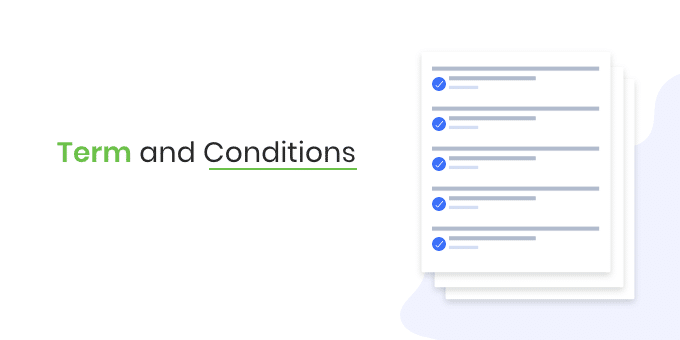Terms and Conditions policy refer to the agreement that includes the rules, terms, and guidelines of acceptable behavior.
Other useful sections, a user must agree to for use or access to your website and mobile app included in this agreement.
Defining the term
The Terms and Conditions policy is a type of legal contract between you and your users who access your website and mobile app.
Having this agreement or policy is optional, as there are no laws that require you to have one.
Though under the GDPR and PECR, consent to processing personal data cannot bundle with terms and conditions. And must cover separately under privacy policy.
It depends on you how you set the guidelines and rules which must agree with a user.
You have every right to exclude users from your app that abuse or use inappropriate words for your app. In the policy, you can maintain your rights against potential app abuse and vice versa.
What should a company include in its Terms and Conditions policy?
You can include the rules and guidelines on how users will access and use your website.
Below are a few examples:
- Terms governing intellectual property, where users will clearly inform that the content, logo and other visual media is company property, protected by the relevant intellectual property laws.
- Then, the Termination clause informs that a user’s account on your website can terminate on your discretion or also in case of abuse.
- Informing users about the law which governs the agreement. It is best that it should stay with the law that is enforceable in the country in which your business is headquarter, or where the main market for your business is.
- There will also clauses relating to third-party website links. Outlining to the user that you are not responsible for anything that has access through such links.
- For example, if your website allows users to create content and can make it available publicly. Then, a content section informs a user that he owns the right to the content they have created. This also outlines that users must give you a license to share this content on your website or mobile app.
- With user produced content, there is the risk that copyright claims made either under the DMCA or similar provisions in different jurisdictions. Thus, Terms and Conditions also need to set out that you will respond to notices and remove any infringing content.
- Then there are clauses addressing the limitations that impose upon users to be able to use the services. This can be provided as a list within the Terms and Conditions.
Enforcement
Creating Terms and Conditions policy is important, though, not required by the law. But, if you have it on your website or on the mobile app, it will benefit you. As a contract between the parties, Terms and Conditions can enforce if there is any breach from either side.

Frequently Asked Questions
1) What is the difference between Terms of Use and Terms and Conditions?
On a website, Terms of Use are terms that apply to every visitor. However, Terms and Conditions are applicable only to particular users on the website. Especially when a user has to pay for a service or product.
2) What is the purpose of Terms and Conditions?
Terms and Conditions are a legally binding contract between you and your website users. The core purpose of this agreement is that it sets rules and guidelines. A user must agree with and follow when they use and access your app or website.
3) Can Terms and Conditions be changed?
Terms and Conditions are legal contracts. If changes are required in the agreement. For website Terms and Conditions, a clause enabling the unilateral change should be included to enable the business to have flexibility as their business grows and develops.

